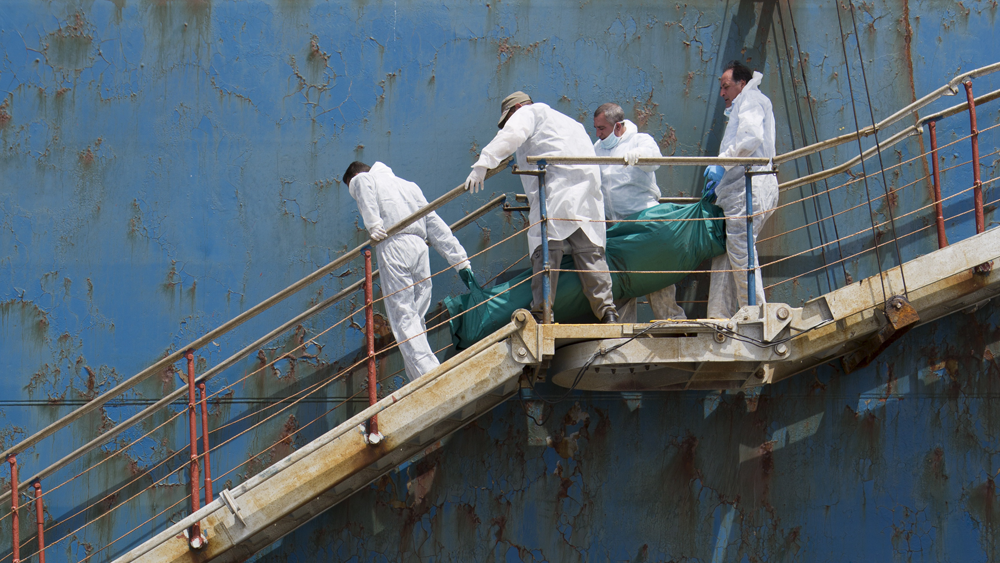The European Council in April missed another chance to create an effective refugee and migration policy. The new Commission agenda at least acknowledges: Rescued people need to be put somewhere.
On April 19 750 people trying to reach Europe drowned when their boat sank off the Libyan coast near Misurata. This was the deadliest such incident in the modern history of the Mediterranean, but it was not enough to push EU governments to take action. An emergency meeting of the European Council four days later produced a vague and predictable statement that utterly failed to meet the enormous scale and complexity of the problem. If every crisis is also an opportunity to radically change track, April’s unprecedented tragedy was a huge missed opportunity for European governments. The public shock could have been used to resist populist rhetoric and in favor of a credible long-term response, however articulated and costly this needs to be. In this the heads of states and governments failed. Fortunately, however, both the European Commission and a majority of MEPs refused to bend to what would be an epochal failure.On May 13 the European Commission disclosed its new agenda on migration, which contains some innovative ideas, especially on how to reform the so far tragically ineffectual mix of control and protection policies at the EU’s maritime borders to manage the “mixed flows” of refugees and migrants desperately trying to reach the European continent. After months of tensions and tactical positioning, the agenda is certainly better than nothing. But for now it is just a set of coordinated proposals. They will have to be translated into detailed measures and will need to gain wide support from the EU member states and the European Parliament before a new European consensus can be built. Support, especially for refugee resettlement, is far from certain.
It is not the first time that the EU has tried to tackle the extremely sensitive and thorny issue of mixed flows migration at its highest institutional level. In December 2005, when the United Kingdom held the 6-month rotating EU presidency, the European Council launched a “Global approach to migration: Priority actions focusing on Africa and the Mediterranean” in response to some fatal attempts by Sub-Saharan migrants to jump border fences in Ceuta, a Spanish territory located on the African continent. And in the wake of numerous shipwrecks off Lampedusa, a Task Force for the Mediterranean was established in October 2013.
None of these moves have prevented new tragedies, instead death tolls have been climbing. So what is really new in this latest round of proposals, and what are chances of their successful implementation?
At the April 23 European Council meeting the only new commitment was to increase funding for Frontex operations in the Mediterranean. There was no substantial change in strategy. The statement said: “The European Union will mobilize all efforts at its disposal to prevent further loss of life at sea and to tackle the root causes of the human emergency that we face” (italics added). It would seem all efforts at the EU’s disposal stretch to €6 million more for Frontex and pledges of more staff, an unspecified number of places for asylum seekers and refugees (determined by the states), and a vague proposal to destroy traffickers’ boats. Is this really all the effort the European Union can muster?
Strengthening Frontex operations in the Mediterranean is a good step. But Frontex is explicitly restricted to controlling borders and cannot conduct proactive search-and-rescue operations (SAR). Many called for a European SAR operation – but the idea was not even on the table when leaders met. The problem? If you rescue people, you have to put them somewhere. If the EU takes responsibility for SAR (as indeed it should, in order to honor its own charter of fundamental rights) it will have to take responsibility for those it saves. That will necessitate some form of refugee redistribution, which is exactly what states have been resisting.
Ending the Impasse
The Council statement, and the declarations from EU leaders which followed, focused disproportionally on the concept of fighting human trafficking and smuggling as a way to reduce migration across the Mediterranean. This ignores the basic fact that smuggling does not cause migration, but meets a demand caused by the desperate wish of many to escape poverty and conflict in the face of shrinking channels of legal entry into the EU.
Establishing ways for migrants and asylum seekers to enter the EU legally would radically reduce the inducement to turn to smuggling operations and punch a hole in the trafficking business. Yet targeting smugglers the way the Council suggests risks making migration routes even more dangerous and expensive. This has happened before – when, for example, the Bulgarian-Turkish border was reinforced, shifting the migration route to the Aegean, and the islands there. The people who lose in this equation are those already most at risk – the migrants and refugees.
The idea of destroying smugglers’ boats, despite the severe legal and practical challenges, which were recently emphasized by UN Secretary General Ban Ki-moon, is now firmly on the agenda. On May 11, the EU’s High Representative for Foreign and Security Affairs, Federica Mogherini, briefed the UN Security Council on Brussels’ intention to submit the draft for a “chapter 7” resolution with a few to gain authorization to “restore international peace and security.”
One should bear in mind, though, the way such a policy would be perceived on the Mediterranean’s southern shores. As one person we talked to in Tunisia recently put it:“They deny us visas and destroy boats. No wonder our youth are tempted by other destinations, equally dangerous but easier to reach, like battlefields in the Middle East.”
If the repressive strand of the EU’s response is fuzzy and on many levels questionable, the humanitarian strand is barely existent. There was no mention of a visa waiver or humanitarian visas for Syrians fleeing the bloodshed and destruction at home. And the crucial question of “burden sharing” – distributing the reception of asylum seekers and the processing of their applications – seemed too controversial to be even discussed by European leaders.
Even when the political discussion touches on resettlement and relocation, as it did at the European Council, member states resist committing themselves to taking a significant number of refugees. As long as these measures are presented as optional, member states will continue to ignore the problem. Even the ridiculously limited concept of resettling 5,000 people across the EU included in the first draft of the Council statement was absent from the final version. German Chancellor Angela Merkel said leaders could not agree on a number, but “felt that 5,000 would not be sufficient.” This resulted in a compromise of nothing at all and left resettlement, as usual, up to the goodwill – subject to domestic pressures – of each member state.
The May 13 agenda addressed this and included more courageous and forward-looking proposals, the most interesting of which is a mandatory scheme for redistributing asylum-seekers among all member states, based on a “redistribution key” taking parameters like the economic strength, population size, unemployment rate, and the numbers of previously accepted asylum-seekers into account. While this proposal was criticized even before it was tabled, with the United Kingdom and Hungary at the forefront, it outlines a way of softening the inner-EU frontline between the countries of first entry (especially Italy) and countries of destination (Germany and Sweden), which so far has caused a political impasse.
In the attempt to overcome resistance, the Commission has advanced a two-step solution. By the end of May, it will propose triggering the emergency response system envisaged by article 78(3) of the Treaty on the Functioning of the EU, which stipulates: “In the event of one or more Member States being confronted by an emergency situation characterized by a sudden inflow of nationals of third countries, the Council, on a proposal from the Commission, may adopt provisional measures for the benefit of the Member State(s) concerned. It shall act after consulting the European Parliament.” The redistribution mechanism will mean that the country where the asylum-seeker is relocated to will be responsible for examining his or her asylum application. The proposal needs a qualified majority vote in the European Council to be adopted, though, which is far from certain. Hence, as a second step, the Commission plans to launch legislation by the end of 2015 to establish “a mandatory and automatically-triggered relocation system to distribute those in clear need of international protection within the EU,” substituting the emergency measures.
Clearly, this would still only be a provisional and partial solution to a problem which calls for sweeping and long-term responses. But it would represent a way around sticky sovereignty questions that so far have brought nothing but political and humanitarian failures.
Read more articles from the May/June 2015 issue FOR FREE in the Berlin Policy Journal App.








